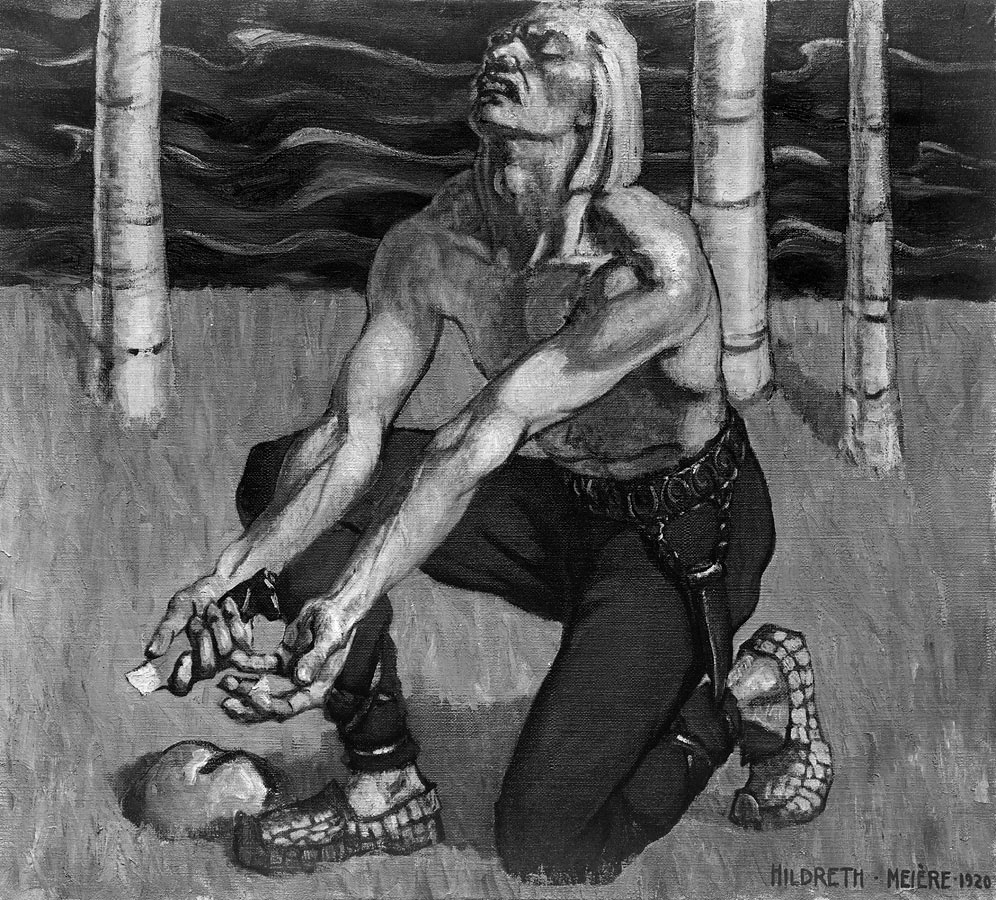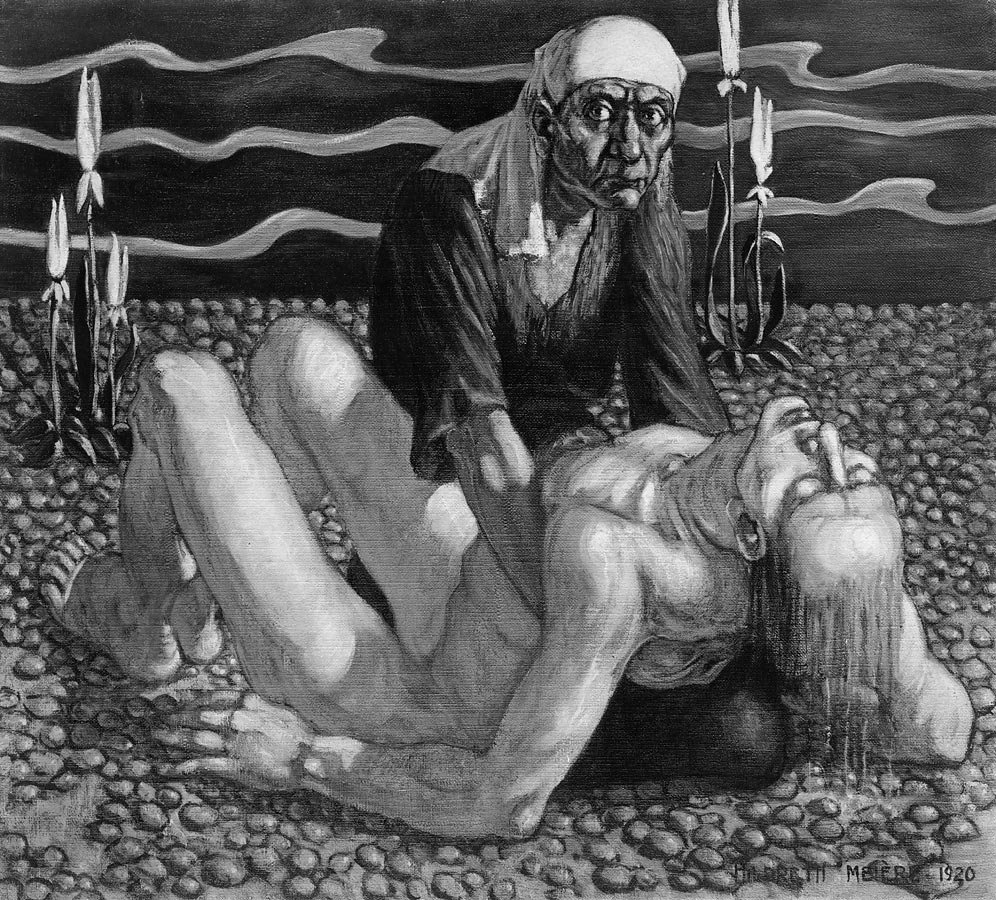Hildreth Meière Documentary Series - Watch Trailer
Hildreth Meière Documentary Series - Watch Trailer
Commissioned by: Alfred LuntMedium: oil on canvasExecuted by: Hildreth MeièreNonextant
Hildreth Meière’s earliest mural commission came from the actor Alfred Lunt. A friend of the Meière family, Lunt asked Meière to paint two scenes from the great nineteenth-century Finnish epic poem Kalevala for his home in Genesee Depot, Wisconsin. As he requested, she worked in a “Scandinavian manner.”1

Kullervo breaks his knife trying to cut the bread
The painting of Kullervo refers to a boy who is sold to the god Ilmarinen as a serf. The wife of Ilmarinen bakes a stone inside a loaf of bread out of spite, gives it to Kullervo and sends him out to be a cowherd. Kullervo breaks his knife while trying to cut the bread and has nothing to eat.
When the shepherd youth, Kullervo,
Saw his magic knife had broken
Weeping sore, he spake as follows:
‘This, the blade that I hold sacred,
This the one thing that I honor,
Relic of my mother’s people!
On the stone within this oat-loaf,
On this cheat-cake of the hostess,
I my precious knife have broken.
How shall I repay this insult,
How avenge this woman’s malice,
What the wages for deception?’2
In revenge he drives the cows into the swamp and brings home a pack of wild animals instead. (Rune XXXIII)3

Lemminkainen’s Mother bringing him back to life
The painting of Lemminkainen’s Mother refers to the story of Lemminkainen, a man who is killed and his body thrown into a river. His mother receives a sign of his death and goes out to search for him. She rakes the pieces of his body out of the river, puts them back together and brings him back to life.
Lemminkainen's faithful mother
Takes the rake of magic metals,
Rakes the Tuoni river bottoms,
Rakes the cataract and whirlpool,
Rakes the swift and boiling current
Of the sacred stream of death-land,
In the Manala home and kingdom.
Searching for her long-lost hero,
Rakes a long time, finding nothing;
Now she wades the river deeper,
To her belt in mud and water,
Deeper, deeper, rakes the death-stream,
Rakes the river's deepest caverns,
Raking up and down the current,
Till at last she finds his tunic,
Heavy-hearted, finds his jacket;
Rakes again and rakes unceasing,
Finds the hero's shoes and stockings,
Sorely troubled, finds these relics;
Now she wades the river deeper,
Rakes the Manala shoals and shallows,
Rakes the deeps at every angle;
As she draws the rake the third time
From the Tuoni shores and waters,
In the rake she finds the body
Of her long-lost Lemminkainen,
In the metal teeth entangled,
In the rake with copper handle.
Thus the reckless Lemminkainen,
Thus the son of Kalevala,
Was recovered from the bottom. . .Life, above all else, was missing.
Then the mother, well reflecting,
Spake these words in bitter weeping:
‘From these fragments, with my magic,
I will bring to life my hero.’ (Rune XV)4
Meière displayed her sketches for the Kalevala murals at the thirty-sixth annual art exhibition of the Architectural League of New York in 1921. She had been concerned about how much to charge Lunt for the paintings. In the end they agreed upon $250:
I said he couldn’t get a sign painter to do them under $100 apiece and that I would do them both for $250. He said that was all right for him, and now I wish I had said $300. However—the actual experience of a thing like this is worth more than money to me.5
Although both Kalevala murals have been lost, Meière also gave Lunt two small sketches in gouache on paper. In one she portrayed A Roman Soldier. In the other, she depicted Alfred Lunt in Fur and Damask. The two sketches hang in a bedroom at Ten Chimneys, now a house museum.
See Catherine Coleman Brawer and Kathleen Murphy Skolnik, The Art Deco Murals of Hildreth Meière (New York: Andrea Monfried Editions, 2014): 35. See also Verna Maki Schmidt, “Continuing a Treasure Hunt,” New World Finn Huhtikuu Toukokuu Kesakuu 2014 Kevat, p. 10.
The Kalevala, trans. John Martin Crawford [1888], Rune XXXIII.
Summaries by Verna Maki Schmidt.
The Kalevala, Rune XV, trans. Crawford.
Hildreth Meière, letter to her parents, December 4, 1919. Hildreth Meière Papers, Archives of American Art, Smithsonian Institution, Washington, DC.